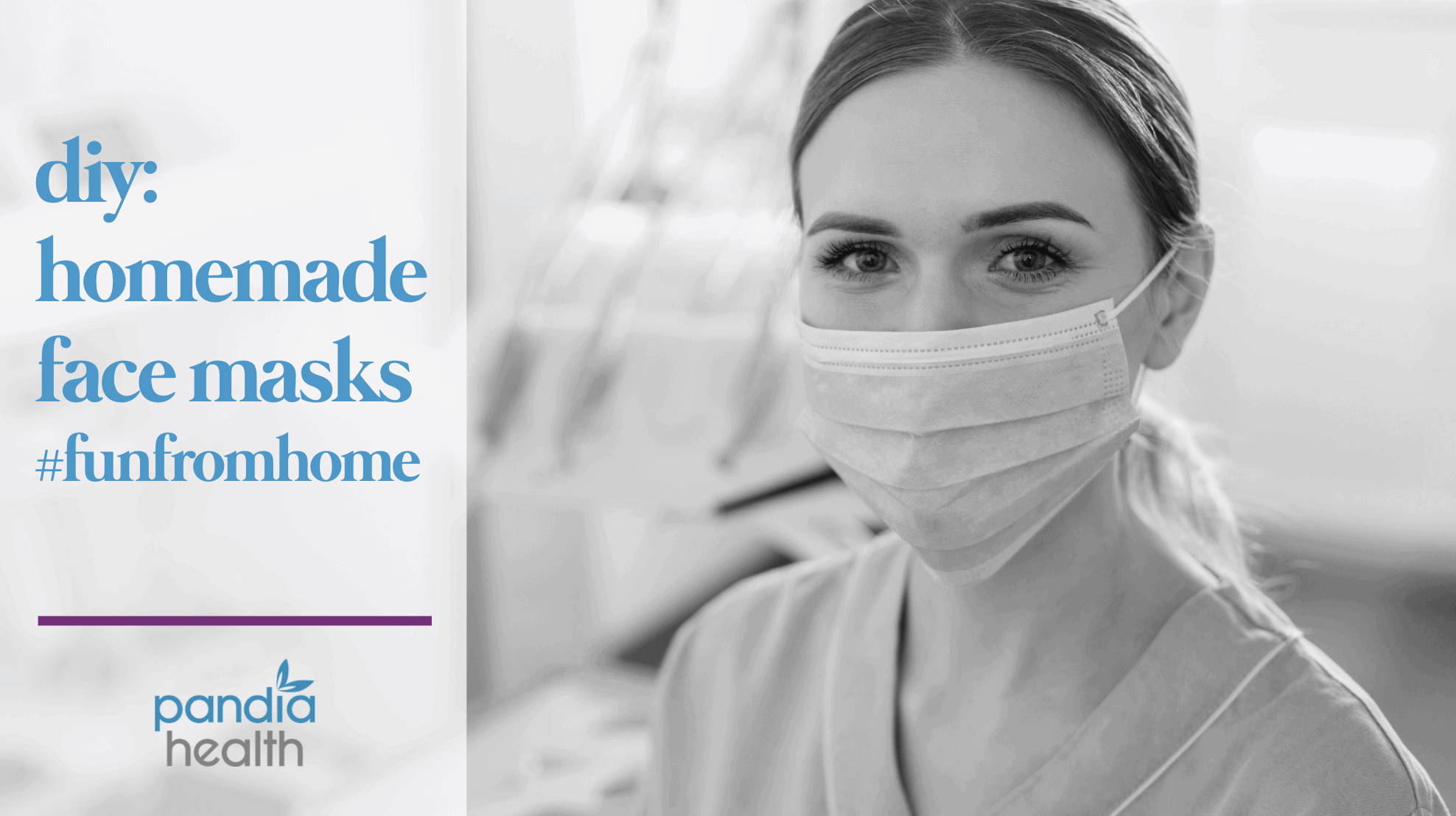Medically reviewed by Sophia Yen, MD, MPH – Written by Jacquie C
Masks aren’t going to completely prevent your chances of obtaining the COVID-19 virus and that it was advised to leave the medical masks to the professionals who need them; However, it doesn’t mean you can’t make your own DIY mask to help lower the chances of catching the virus or spreading it to others.
There is an extreme shortage of face masks as there are a lot of medical professionals around the world who are working on the front lines with sick patients, therefore, Pandia’s Chief of Staff (along with her family) will be doing volunteer work by hand making masks to donate to medical facilities in which Pandia Health strongly encourages everyone to do as well!
“Save the medical grade masks for healthcare professionals!”
Today we will be discussing how to make DIY masks but as a reminder it’s important to note that the CDC does not know how effective cloth masks are, however, it doesn’t hurt to have an extra layer of protection!
The COVID-19 outbreak has given us all a break, and whether we wanted it or not. Many are picking up hobbies to fill in the empty time they now have to keep their minds active in order to prevent them falling into the dangerous clasps of laziness. If you feel a need to contribute to this pandemic somehow and you can’t do it through money (as there might not be enough to spare for donations especially with the chances that work has been postponed) then hopefully you can do it by making masks to donate or share around your community.
It’s hard to be in quarantine as there are a lot of things people need to accomplish or work for in order to maintain their lifestyle; and though it’s hard, it’s for the greater good of not spreading it around and flattening the curve (if you don’t know how social distancing can flatten the curve please read about it here). Right, now let’s move onto how to make a DIY mask!
(Read about the trending hashtag #millionmaskschallenge here.)
Here’s an instructional guide from Vanderbilt University’s Medical Center on how to make a DIY mask.
Making a mask with elastic:
“Materials needed:
- Tight-weave cotton fabric (i.e. quilting cotton)
- Fabric must be newly purchased within approximately the past year and never used.
- Wash and dry fabric without fragrance or dyes prior to sewing.
- Rope Elastic, beading cord elastic will work (you may also use 1/8” flat elastic if ¼” is unavailable. Some have used wider flat elastic and cut it in half with some success).
One adult mask requires two (2) 9”x6” pieces tight-weave cotton and two 7” pieces of 1/4 inch elastic. Therefore, one yard of 44” wide fabric yields 12-15 masks. You need 7.5 yards of elastic for 25 masks (14 inches per mask).
You can make two sizes: Adult or Child.
Adult-sized masks will be the greatest need.
- Put [the] right sides of cotton fabric together (Be sure any fabric design is placed horizontally.)
- Cut 9×6 (Adult) or 7.5 x 5 (Child)
- Starting at the center of the bottom edge, sew to the first corner, stop. Sew the elastic with the edge out into the corner. A few stitches forward and back will hold this.
- Sew to the next corner, stop, and bring the other end of the same elastic to the corner and sew a few stitches forward and back.
- Now sew across that top of the mask to the next corner. Again, put an elastic with the edge out.
- Sew to the next corner and sew in the other end of the same elastic.
- Sew across the bottom leaving about 1.5” to 2” open. Stop, cut the thread. Turn inside out.
- Pin 3 tucks on each side of the mask. Make sure the tucks are the same direction
- Sew around the edge of the mask twice.”
I hope that everyone reading this can find sometime to make a few masks and donate them to medical centers! It also won’t hurt to make your own mask in case you have to run any emergency errands outside.
A lot of people still need to visit pharmacies and grocery stores to get their essentials but hopefully by signing up with Pandia Health and getting your birth control delivered will help minimize the amount of times you have to go outside. Stay safe by washing your hands, avoiding touching your face, and staying inside!
Pandia Health always provides FREE delivery and automatic refills of your birth control. We’ll help you get through this tough time period, no matter how long it takes! Get started today!
The above information is for general informational purposes only and is NOT a substitute for professional medical advice. Always seek the advice of your doctor/primary care provider before starting or changing treatment.

